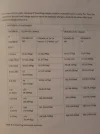Install the app
How to install the app on iOS
Follow along with the video below to see how to install our site as a web app on your home screen.
Note: This feature may not be available in some browsers.
You are using an out of date browser. It may not display this or other websites correctly.
You should upgrade or use an alternative browser.
You should upgrade or use an alternative browser.
Taistelu rakennetulla alueella (ent. Asutuskeskustaisteluketju)
- Viestiketjun aloittaja akealik
- Aloitus PVM
Tässä toinen esimerkki kapineesti mikä mahdollisesti tulee yleistymään lähivuosien varrella.


https://warisboring.com/syria-and-i...emote-controlled-guns-27ce6004ab1f#.jx5d65g9vThe Syrian civil war is producing a multitude of remotely-operated, custom-made killing machines — sniper rifles and machine guns which a shooter can trigger remotely with the push of a button.
Remotely-operated guns are common in militaries around the world. The United States has thousands of them mounted on tanks and other armored vehicles. The U.S. Marine Corps is testing a smaller machine-gun robot called MAARS, and other gun-bots have appeared in South Korea, Israel and Russia.
But their adoption by rebel groups is an innovation arising from an intermingling of war, cheap personal computers and cameras. The devices typically use cables to hook up the guns to control stations. Aside from the gun, a complete setup only costs a few hundred bucks worth of off-the-shelf components and some technical skills.
After that, it’s just a matter of swiveling the now-teleoperated gun with a joystick, gamepad or a keyboard and triggering the firing mechanism.
It’s a highly effective means of denying an area to the enemy while covering one’s self from fire.
See, it’s suicide in warfare to not suppress your foe’s machine guns before maneuvering. Since a teleoperated gun cannot easily be suppressed, an attacking force’s job becomes all the more difficult.
While the weapons are hardly new to the Syrian battlefield, an August report published by the U.S. Army’s Foreign Military Studies Office listed 20 distinct teleoperated weapons spotted in Iraq and Syria which can be traced to specific armed factions.
Quality — and accuracy — may vary. A teleoperated PK-style machine gun operated by the FSA in Aleppo in 2013 had no scope. Mobile versions, including two tracked FSA machine guns, and a mobile device built by the Al-Qaeda linked Al Sunna Knights, are laughably crude.
Some of the weapons look like they may topple over at any moment.
And the types of weapons are as diverse as the firearms seen in the conflict. The Kurdish peshmerga created a teleoperated MG3—a German machine gun which traces its origins back to the 1940s. FSA rebels in Aleppo in September 2013 even converted a World War II-era German StG-44 into a remotely-triggered sniper rifle.
Some examples appear to be highly accurate because they’re welded to steel platforms, making them highly stable — with maneuverability provided by servomotors.
“In many cases, if not all, they are using expert technicians and engineers to fashion robotics that will function as remote controlled weapons,” Bunker and Keshavarz write.
“It is troublesome to wonder how well they would do if they had better materials — potentially making something that could actually match the weaponry developed in the United States.”
Benelli
Respected Leader
Ehkä sitten kun senaattikiinteistöstä on päästy.Tarvittaisiin Suomeenkin tuollainen harjoituslähiö tai pari. Eikö varusmiehet voitaisi alistaa ja orjuuttaa rakentamaan sellaista? Pioneerit vaikka ensimmäisinä. Sekin voitaisiin katsoa sitten rakennusalan työkokemukseksi.
Sitten olisikin järjestelmä jolla voisi korvata JV-miinat.Alkaa lähennellä Alien-elokuvan täysautomaattista sentry gun.

https://warisboring.com/the-u-s-arm...-aim-bazookas-at-them-b9dc361792fa#.q4518mlzfThe war in Afghanistan had a lot to do with the Carl Gustaf seeing a revival in U.S. service. Militants harassed American troops from long ranges and from behind cover, making it hard to shoot back. A missile from an orbiting aircraft or a shoulder-fired Javelin launcher would reach far enough, at a cost of around $80,000 per missile.
A single Carl Gustaf round costs — at most — around three percent as much, and carries an effective range of 1,000 meters if it’s a rocket-boosted round. So it’s no wonder why the Army loves it.
Fundamentally, the launcher’s design hasn’t changed. Saab, the weapon’s Swedish developer, is pitching the M3E1 as a collection of evolutionary improvements optimized for urban warfare. It’s slightly smaller and weighs around 15 pounds, seven pounds lighter than the current M3.
The M3’s weight is one thing soldiers don’t tend to like about it. And since modern soldiers wear a lot more headgear, Saab tweaked the design to be more ergonomic and adjustable. Awkward is not a feeling a soldier wants to have when firing a high-explosive round in an urban firefight.
The M3E1 also features an interface for “intelligent” sights, allowing soldiers to program air-bursting rounds to explode above a precise point.
onko pehmeä kilpi parempi taistelussa kuin kova suoja?
Kova suoja jota ei kykene tehokkaasti siirtämään on vähemmän hyödyllinen kuin olla ilman sitä. Tuollainen pehmeä suoja toimii kai ihan hyvin niin kauan kunhan kukaan ei rupea sitä kiväärillä ampumaan. Mutta siinäkin on omat ongelmansa kätevyyden kanssa.
Tuollaisia origami-suojia voisi olla ainakin sirpalesuojana taaempana oleville, vaikkapa esikuntateltan luona, sen varalle että tulee tykisötulta. Esim.
Yksi tuttu erikoisupseeri KarPr:sta kehitteli aikoinaan sirpalesuojan TOW-laukaisimelle. Sai siitä vielä ihan rahapalkinnon kunniakirjan lisäksi.
Jenkkien mietteitä
http://www.military.com/daily-news/...l-need-smaller-units-for-megacity-combat.htmlThe Army's chief of staff said Tuesday that in about 10 years, the service must be ready to fight in megacities, a type of warfare that will require future units to resemble today's special operations forces.
Speaking at the Future of War Conference 2017 hosted by New America in Washington, D.C., Gen. Mark Milley said that the character of warfare will likely go through a fundamental shift over the next decade.
The world's population is steadily moving toward living in megacities. Currently, there are about a dozen of these huge urban areas with populations of more than 10 million. By mid-century, "we are going to have at least 50 or more," Milley said.
"So what this means then -- and I have discussed this with the Army leadership -- we are going to have to ... optimize the Army for urban warfare," he said.
This has implications for equipment, from the "width, size and weight of tanks" to the "rotor-span of helicopters," the general said.
Truly preparing for urban warfare will mean redesigning fighting units to better cope with the compartmenting nature of city streets, buildings, floors and rooms, he said.
"The Army will definitely have to organize differently, probably into smaller, more compartmented groups," Milley said. "We will have to have, what I think, is a lot of relatively small formations that are networked and can leverage Air Force and naval-delivered joint fires."
The service is still debating the size of these units, but "probably somewhere in the range of companies to battalions," he said.
"If you think of how some of our special operations operate today, that may be a preview of how large your Army operates in the future," Milley said. "That doesn't mean you do away with battalions and brigades, but the fighting element will probably end up having to be a much smaller entity."
kertakenttään
Ylipäällikkö
https://mwi.usma.edu/army-megacities-unit-look-like/
https://mwi.usma.edu/category/commentary-analysis/
Nyt löytyi jackpot!! Pistäkää muistiin tuo sivu.
https://mwi.usma.edu/category/commentary-analysis/
Nyt löytyi jackpot!! Pistäkää muistiin tuo sivu.
kertakenttään
Ylipäällikkö
Jo yksinomaan rakennuksen luo pääseminen jossain lähiökerrostalohelvetissä on ison ja raskaan sotatyön takana, ja sitten pitäisi vielä vyöryttää.
Muistaakseni eräässä tutkimuksessa tultiin siihen lopputulokseen että suurin osa tappioista TRA:ssa syntyy rakennusten ulkopuolella taistellessa
Savuja, sitten lisää savuja ja aivan helekutisti tulitukea. Jos rakennuksessa on sillä seinustalla mitä kohti hyökätään ikkunoita niin niistä sisään tellu, jos ei valmista reikää niin ampuisin varmaan kessillä tai kylkipanoksella reiän seinään matkan päästä ja yhdellä nopealla spurtilla toimittaisin paketin reiästä sisään. Jos reikä ei valmiiksi tarpeeksi iso niin laajennetaan raivaustangolla sitä ja sitten vasta tellu sisään. Rakennuksessa taas voi kylkipanoksella ampua reikiä väliseiniin ja niistä tunkea raivaustankoa läpi.
Benelli
Respected Leader
Tellun voi heittää ikkunasta sisään lähinnä vain jos rakennusta ei olla linnoitettu. Ontelovaikutteiset eivät ole erityisen ideaaleja tähän eikä niitä kannata turhaan haaskata, ne tarvitaan vaunuja vastaan.Savuja, sitten lisää savuja ja aivan helekutisti tulitukea. Jos rakennuksessa on sillä seinustalla mitä kohti hyökätään ikkunoita niin niistä sisään tellu, jos ei valmista reikää niin ampuisin varmaan kessillä tai kylkipanoksella reiän seinään matkan päästä ja yhdellä nopealla spurtilla toimittaisin paketin reiästä sisään. Jos reikä ei valmiiksi tarpeeksi iso niin laajennetaan raivaustangolla sitä ja sitten vasta tellu sisään. Rakennuksessa taas voi kylkipanoksella ampua reikiä väliseiniin ja niistä tunkea raivaustankoa läpi.
Ennemmin kannattaa tehdä sopivia panoksia vaikka telamiinoista ja hiekasta vaikka esimerkiksi matkalaukkuun pyörillä jonka voi laittaa seinää/ovea vasten lanka palamaan ja karkuun, pitää vain muistaa laittaa oikein päin.
TNT:n sulamispiste on muuten alle 90 C.
kertakenttään
Ylipäällikkö
Ontelovaikutteiset eivät ole erityisen ideaaleja tähän eikä niitä kannata turhaan haaskata,
Miten muuten saat nopeasti reiän rakennukseen sisätiloissa? Näkisin, että aika hyvä siihen tarkoitukseen.
Tellun voi heittää ikkunasta sisään lähinnä vain jos rakennusta ei olla linnoitettu
Ja jos on niin sitten ammutaan kauempaa siihen reikä mistä ujuttaa se tellu sisään. Eihän se sisälle pääsy nyt tässä taida olla se ongelma välineiden puolesta, joten miksi alkaa kikkailee sen suurempaa. Onhan meillä myös pentriittipötköjä, joista voi muovailla mielensä mukaan. Mikään ei estä ampumasta routapanosta seinään.
AJJV
Kapteeni
Tuossa se field manual http://www.globalsecurity.org/military/library/policy/army/fm/3-06-11/ch8.htm
Suomalaisten kertasinkojen käyttö on siinä mielessä ongelmallista, että ne tekevät betoniin ja metallilevyihin vain sellaisen kolikon kokoisen reiän.
Tsetseenit onnistuivat varsinkin ensimmäisessä sodassa rajoittamaan venäläisten pääsyä rakennuksiin, ihan yksinkertaisesti vain naulaamalla levyjä ja lankkuja ikkunoihin, sekä oviin. Toisessa tsetseenian sodasssa toteutettiin sitten kaupunkialueen eristämistä ja rakennusten tuhoamista riittävällä suorasuuntaustulivoimalla. Kaupunkitaisteluissa toimivaksi kokoonpanoksi osoittautui neljän miehen partio, jossa johtajalla oli RPK + kranaatinlaukaisin, sinkomies RPG-7 + henkilökohtainen ase, kk-mies PKM:llä ja tarkka-ampuja SVD:llä aseistettuna.
Saksalaiset keräsivät syksyllä 1944 kokemuksiaan Varsovan kaupunkitaisteluista. Opeiksi luettiin se, että maantasalle tuhotut rakennukset eivät olleet vaarattomia. Tuhotut rakennukset ja korttelit piti varmistaa omilla joukoilla, muuten vihollinen käytti niitä soluttautumiseen ja onnistui sitä kautta suorittamaan hyökkäyksiä saksalaisten selustaan.
Ja ehdottomasti kaupunkitaistelua käyvien yksiköiden täytyy osata sekä mekaaninen murtaminen että räjähdysaineiden käyttö. Todennäköisesti järkevintä on tehdä erikokoisia kasapanoksia puoli kiloa, kilo ja vaikka kahden kilon panoksia. Niillä saadaan ryhmän ja partion tasalla nopeasti tuhottua vaikka ovet ja painevaikutusta rakennusten sisälle. Puolustuksessa kevyitä kylkimiinoja kannattaa käyttää viuhkamiinojen korvikkeena varsinkin kujilla. Kannattaa kuitenkin huomioida, että kylkimiinan sirpaleet ovat hyvin kuumia ja ne saattavat syttyää tulipalon.
Tsetseenit onnistuivat varsinkin ensimmäisessä sodassa rajoittamaan venäläisten pääsyä rakennuksiin, ihan yksinkertaisesti vain naulaamalla levyjä ja lankkuja ikkunoihin, sekä oviin. Toisessa tsetseenian sodasssa toteutettiin sitten kaupunkialueen eristämistä ja rakennusten tuhoamista riittävällä suorasuuntaustulivoimalla. Kaupunkitaisteluissa toimivaksi kokoonpanoksi osoittautui neljän miehen partio, jossa johtajalla oli RPK + kranaatinlaukaisin, sinkomies RPG-7 + henkilökohtainen ase, kk-mies PKM:llä ja tarkka-ampuja SVD:llä aseistettuna.
Saksalaiset keräsivät syksyllä 1944 kokemuksiaan Varsovan kaupunkitaisteluista. Opeiksi luettiin se, että maantasalle tuhotut rakennukset eivät olleet vaarattomia. Tuhotut rakennukset ja korttelit piti varmistaa omilla joukoilla, muuten vihollinen käytti niitä soluttautumiseen ja onnistui sitä kautta suorittamaan hyökkäyksiä saksalaisten selustaan.
Ja ehdottomasti kaupunkitaistelua käyvien yksiköiden täytyy osata sekä mekaaninen murtaminen että räjähdysaineiden käyttö. Todennäköisesti järkevintä on tehdä erikokoisia kasapanoksia puoli kiloa, kilo ja vaikka kahden kilon panoksia. Niillä saadaan ryhmän ja partion tasalla nopeasti tuhottua vaikka ovet ja painevaikutusta rakennusten sisälle. Puolustuksessa kevyitä kylkimiinoja kannattaa käyttää viuhkamiinojen korvikkeena varsinkin kujilla. Kannattaa kuitenkin huomioida, että kylkimiinan sirpaleet ovat hyvin kuumia ja ne saattavat syttyää tulipalon.



